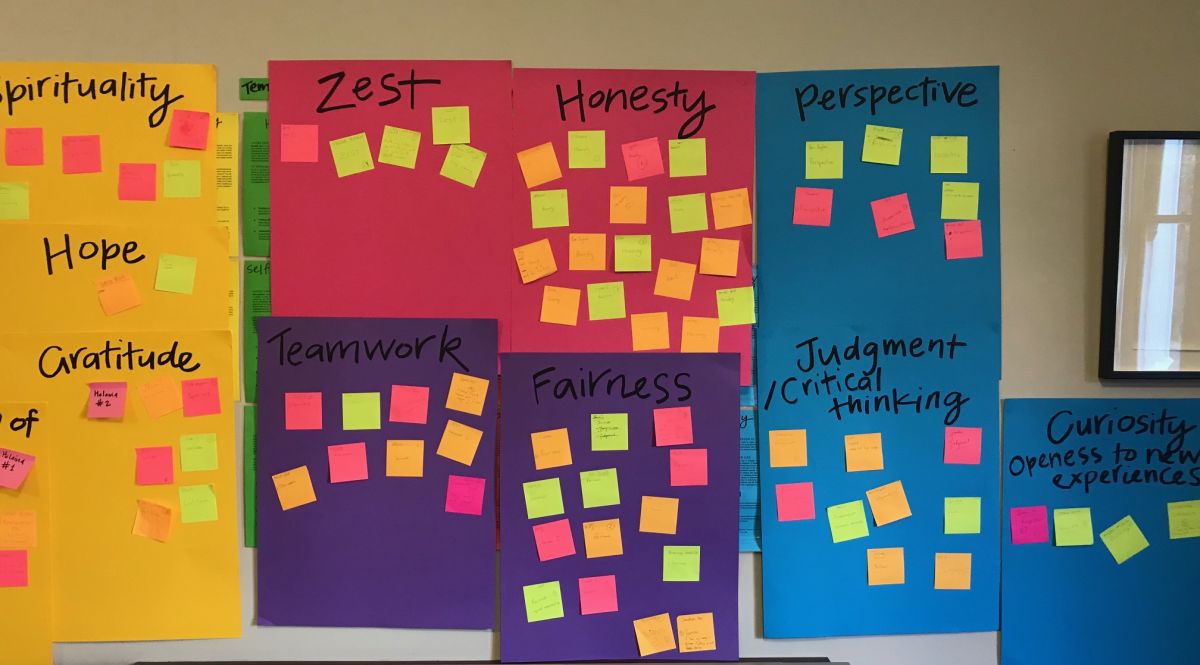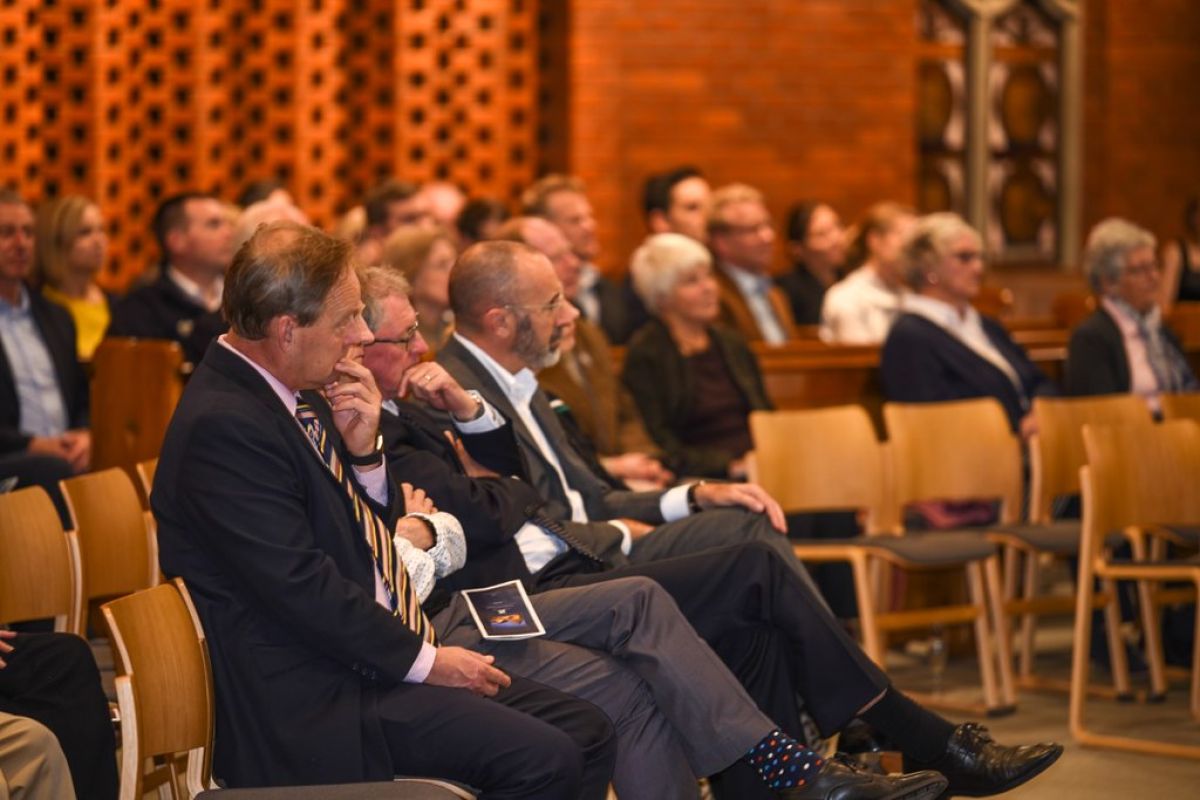Who is responsible for well-being?
7 August 2019
Written by Head of Well-being, Kerry Larby
There is a clear consensus that well-being is important. It matters, and no one disagrees. However, other questions regarding well-being are up for debate and reflect the complexity of the concept. When we embarked on our whole school well-being goal, one question was deliberated more than any other: Who is responsible for well-being?
I have found this question to be as polarising as a conversation about political values!
For many, well-being is seen as the responsibility of the individual. Every day we make individual choices that directly impact our well-being; how we think, how often we move and who we connect with. So why would an organisation focus on well-being when it is the responsibility of the individual?

We knew that reflecting on this question and providing clarity around it was vital to progress our well-being goal at St Andrew’s College. Our research has given us a very clear organisational perspective on why well-being must be understood as both an individual and collective responsibility. Melbourne University Positive Psychology professor, Aaron Jarden has provided a framework that simplifies the complexity. His ‘Me, We and Us’ approach acknowledges that interventions regarding well-being can happen at different levels of responsibility and can make a significant difference to people’s well-being.
Me: Well-being as an individual responsibility
At St Andrew’s College, we want our students and staff to know that well-being is an individual responsibility, and have adopted interventions to support this. Dr Sven Hansen’s work on cultivating resilience has reinforced our understanding that as an individual we have control over factors that impact our resilience and well-being, and every day we make choices which directly impact both. Students and teachers have been introduced to evidence-based information regarding sleep, diet, breathing, exercise, thinking patterns, character strengths and relationship building. In turn, we have seen many staff and students make positive changes in their lives, so they feel more vital, connected and engaged in life.

We: Well-being is the responsibility of the group
It is naïve to consider well-being as purely an individual responsibility. In the end, we are social animals and our quality of life is directly impacted by the interactions and relationships we have with others. Context matters. Dr. Helen Street passionately agrees with this and has provided an inspiring argument for why schools should focus on creating a cohesive social context if they want to make a difference for student's well-being. At St Andrew’s College, our teachers work in department groups and our students contribute to a team as part of class and year groups. The quality of the relationships and interactions in these groups has an overarching impact on everybody’s well-being. And everybody has a role to play into building a positive culture in these groups.

Yale University professor and director of the Centre for Emotional Intelligence, Marc Brackett, provides a rationale for this, stating that emotions are contagious. The process of emotion contagion acknowledges that we can shift the moods of the people we connect with. With this understanding, we know that everyday teachers set the emotional climate in their classrooms and can consciously take actions to build class cohesion. We know that leadership is more about creating an emotional climate and positive culture than it is about delegating tasks and managing people.
Providing a context where individuals can build cohesion and collaboration is a key focus for our whole school well-being goal. Dr. John Hattie’s research on the factors which make the greatest difference in the classroom has concluded that collective efficacy (teachers’ belief that their collective action can positively impact student outcomes) is the most significant factor impacting student achievement. Collaboration is key.

At St Andrew’s College, staff and student team building activities are an important intervention for cultivating well-being, and many of our year group themes build on this goal. An example of this was when our entire executive leadership team, subject department teams, and whole year groups, analysed the constellation of character strengths that represented their teams. This focused activity built inclusivity, awareness of self and others, and relational trust.

Us: Well-being is the responsibility of the organisation
Our leaders understand their responsibility in making well-being a key value for our organisation. Over the past year, St Andrew’s College has embarked on the process of creating a new Strategic Plan called Framing our Future, which has included the review of our whole school values. Our leaders have a passionate understanding of their responsibilities for decision-making which impact on the well-being of our school’s culture. Changes to strategy, policy and planning set the scene for well-being to be valued as a priority and allow interventions at other levels to occur.

Our new Strategic Plan explicitly states that well-being is one of five key strategic pillars. This year, the College has also embraced two new whole school values that directly link to well-being as a value: inclusivity and creativity. Creativity gives direct permission for staff to place value on creating space for students to imagine and think differently, while inclusivity places value on the promotion of positive relationships in our community. We expect to see some exciting behaviours and actions being demonstrated as we bring these values to life.
In 2018, our Board Chair, Bryan Pearson, committed to learning more about the research related to positive psychology, well-being and school communities. He attended the annual Positive Education Schools’ Association conference to gain a clearer perspective of how he could contribute at a Board level to the future of well-being in our school. This commitment to understanding well being from key leaders, and their understanding that they hold responsibility for well-being at an organisation level, gives me huge support, and faith in the sustainability of this focus at St Andrew’s College.

Next month, leaders have decided to schedule the first-ever whole school assembly focused on well-being. The vision for this assembly is that character will be formally celebrated so that students understand we value the diverse strengths they bring to make our community flourish. This shift in thinking related to celebrating process as well as the outcome, is an example of leaders making a tangible difference for the well-being of our community.
Together: Well-being is the responsibility of us all
We want our staff and students at St Andrew’s College to perceive well-being through two key strands of responsibility: the responsibility of the individual to make decisions that impact positively on their own well-being; and the shared, collective responsibility which must support and sustain others’ well-being. The Me, We and Us framework for well-being has provided us with some important questions to keep reflecting on, in order for us to achieve our goals:
What can I do as an individual to improve my well-being?
How do I contribute to others’ well-being?
How do we create an organisation which values staff and student well-being?
Related Posts


